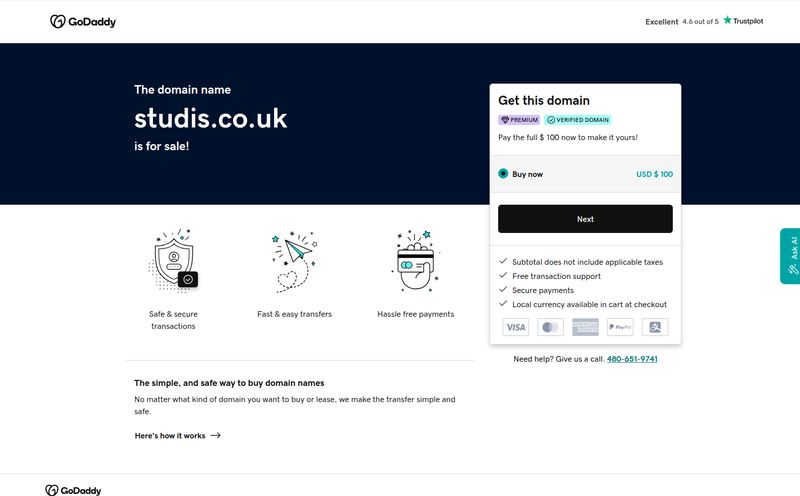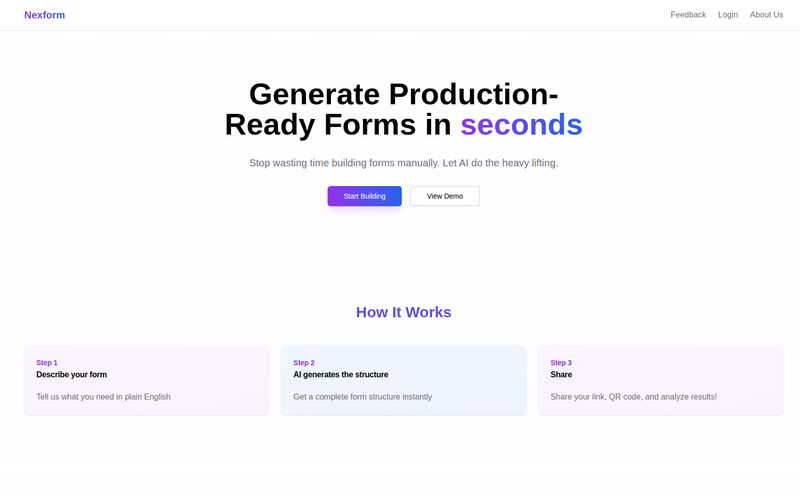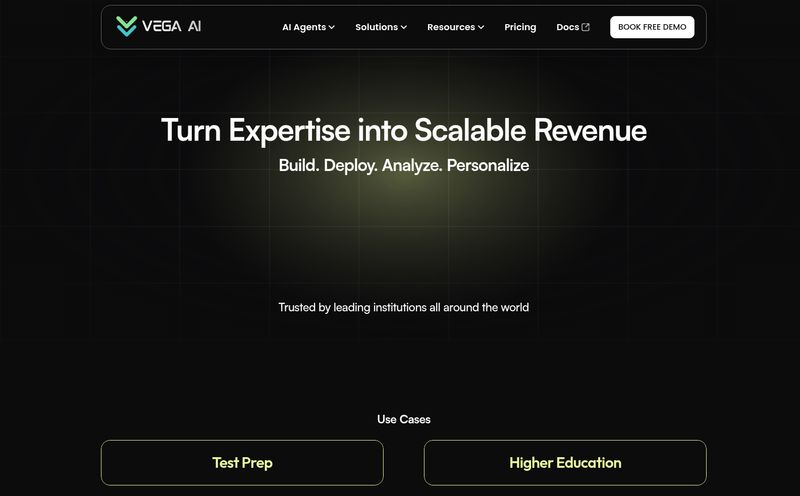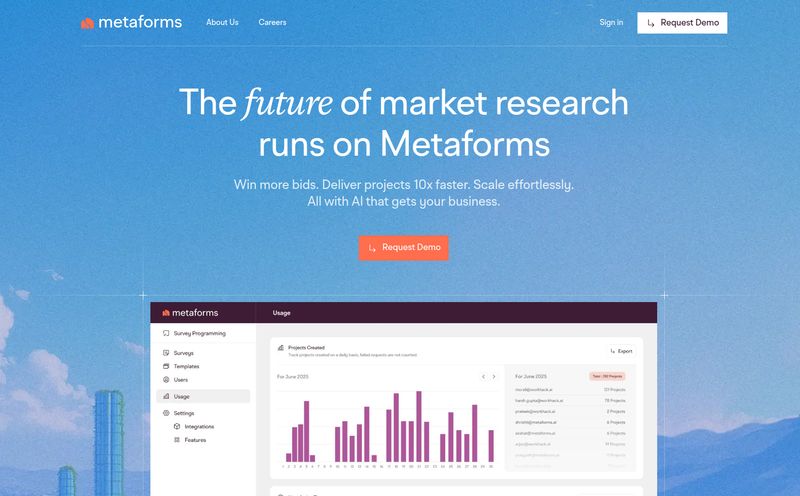If you’re anything like me, your digital workspace is a special kind of organized chaos. I’ve got Trello for project pipelines, Google Calendar for my appointments, Notion for my brain-dump notes, and a smattering of sticky notes (both digital and physical) for tasks that are too urgent to forget but not important enough to categorize. It’s a system. A messy, tab-switching, context-losing system that probably shaves a few points off my sanity score each week.
For years, we've been promised the holy grail: the one app to rule them all. The “all-in-one” workspace. I’ve tried them all, and most end up being a jack of all trades and master of absolutely none. So when I heard about Routine, I was, shall we say, professionally skeptical. Another pretty face in the crowded productivity space? But then I saw two words that made me sit up and pay attention: local-first. And that, my friends, changes everything.
What Exactly Is Routine? Beyond Another To-Do List
Routine bills itself as an all-in-one work platform, and for once, that's not just marketing fluff. It’s designed to be the central nervous system for your professional life, connecting your tasks, calendar, projects, notes, and even your contacts into one cohesive workspace. Think of it less like a simple to-do list and more like a personal chief of staff living inside your computer.
It pulls everything together. You’re not just looking at a list of tasks; you're looking at your tasks scheduled directly onto your calendar, next to your meetings, with your relevant project notes just a click away. The goal is to stop the digital whiplash of bouncing between five different apps just to figure out what you’re supposed to be doing next. It’s about creating flow, not friction.
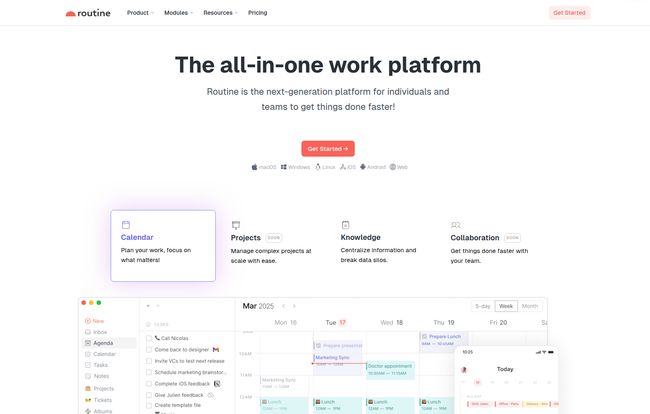
Visit Routine
The “Local-First” Approach: Why This Is a Big Deal
Okay, let's get into the nerdy stuff that really matters. Most of the apps we use today are cloud-based. Notion, Asana, Google Docs—your data lives on their servers, and you access it through your browser or an app that’s essentially a fancy web browser. This is fine, until it isn't. Until your internet flickers, or their servers are slow, and you’re staring at a loading spinner instead of working.
Routine’s local-first philosophy flips that script. Your data lives primarily on your device. It’s yours. It’s fast. Ridiculously fast. There’s no lag, no waiting for a server in another timezone to respond. It all happens instantly, and then it syncs to the cloud for backup and access on other devices. This has two massive benefits:
- Speed: When you’re in a flow state, the last thing you want is a tool that can't keep up. Routine feels instantaneous. Capturing a task, checking your schedule—it all happens at the speed of thought, not the speed of your Wi-Fi.
- Privacy: In an age where we’re increasingly (and rightfully) paranoid about our data, knowing that your core information resides on your own machine provides some serious peace of mind. It’s a fundamental shift in ownership and control.
This isn't just a feature; it's a statement. It’s a move away from total reliance on big tech servers and a move back toward personal ownership of our digital lives. I love it.
My Favorite Routine Features (The Stuff That Actually Works)
A great philosophy is nice, but the app has to deliver. And Routine has some genuinely clever features that integrate beautifully into a busy workday.
The Console: Your Personal Command Line
If you've ever used a launcher like Alfred or Raycast, you'll feel right at home with Routine's Console. It’s a simple pop-up you can call from anywhere on your computer with a keyboard shortcut (CTRL+Space by default). From here, you can do… well, pretty much anything. Create a task, jot down a note, schedule an event, search for a contact. You can capture a stray thought from an email or a Slack message and triage it into your system without ever leaving the window you’re in. It's a superpower for preventing good ideas from falling through the cracks.
The Unified Dashboard and Calendar Planning
This is where the magic really happens. Routine’s main view is a beautiful integration of your calendar and your task list. You can literally drag tasks from your inbox directly onto time blocks in your calendar. This practice, often called time blocking, is a game-changer for realistically planning your day. It forces you to confront the fact that you only have so many hours, preventing you from creating an endless, soul-crushing to-do list. You see your meetings and your planned work side-by-side, giving you a true, actionable picture of your day ahead.
Custom Types and Views
Here’s where it gets really powerful for us control freaks. Routine isn't super rigid. Using 'Custom Types' and 'Views,' you can basically define how you want to organize and see your information. Want to create a specific type of entry for “Client Follow-ups” with its own set of properties? You can do that. Want to create a view that only shows you high-priority tasks for a specific project that are due this week? You can do that too. It’s like having the power of a Notion database but with the structure and speed of a native application. It adapts to your brain, not the other way around.
Let's Talk Money: Routine's Pricing Breakdown
So, what's the damage? I was pleasantly surprised here. Routine’s pricing is straightforward and offers a very generous free plan that isn’t just a crippled trial version.
| Plan | Price | Key Features |
|---|---|---|
| Free | $0 | Tasks, calendars, notes & contacts, 5 data connectors, 7-day history. |
| Professional | $10 /seat/month | Everything in Free, plus advanced calendar layouts, views, all providers, 10 connectors, 30-day history. |
| Business | $13 /seat/month (Soon) | Everything in Pro, plus collaboration, workspaces, 30 connectors, 90-day history. |
| Enterprise | Contact for Price (Soon) | Unlimited everything, compliance, analytics, dedicated support. |
The Free plan is more than enough for most individuals to get started and see if the workflow clicks. The fact that it includes the core functionality—tasks, calendar, notes—is fantastic. The Professional plan is a no-brainer for power users who need more integrations and a longer data history. The price is perfectly in line with other premium productivity tools, and given the speed and design, I'd say it's a bargain.
The Good, The Bad, and The... 'Coming Soon'
No tool is perfect. Let's get real about Routine's strengths and where it currently falls a little short.
On the plus side, the all-in-one design genuinely reduces context switching. The local-first speed and privacy are, in my opinion, killer features. The keyboard-centric design is a dream for anyone who wants to work faster, and the free teir is incredibly generous.
On the other hand, a lot of the most anticipated features are still on the horizon. Real-time collaboration, an AI assistant, and the full-fledged Business and Enterprise plans are all marked as “soon.” This means if you’re looking for a tool to manage a large, collaborative team today, Routine might not be ready for you just yet. It feels like you're investing in a platform with incredible potential, but some of that potential is still just that—potential.
Who Should Use Routine? And Who Should Wait?
So, who is this for?
In its current state, Routine is an absolute dream for individuals. I’m talking freelancers, consultants, developers, writers, entrepreneurs—anyone who is the master of their own domain and craves a fast, private, and powerful personal command center. If you're a productivity enthusiast who loves tools like Superhuman or the aforementioned Alfred, you will feel right at home. It’s for the person who wants to build their own perfect system.
Who should probably hold off for a bit? Large teams that depend heavily on real-time, synchronous collaboration features like shared databases with complex permissions, or multi-user project assignments. While these features are on the roadmap, they aren't here yet. If your team lives and breathes in Jira or Asana, making the switch right now might be premature.
The Verdict: A Bet on a Smarter Way to Work
I came in skeptical, and I’m walking away a genuine fan. Routine isn't just another task manager. It’s a thoughtfully designed workspace built on a philosophy of speed, ownership, and focus. It fixes many of the little frustrations that plague modern, cloud-based productivity tools.
While it’s still growing, what’s already here is polished, powerful, and a joy to use. It has simplified my personal workflow and made me feel more in control of my day. If you’re tired of the tab-switching olympics and want to try a tool that feels like it was built for the modern professional, you owe it to yourself to give the free version of Routine a spin. You might just find the quiet, focused workspace you didn’t know you were missing.
Frequently Asked Questions about Routine
- What is Routine in a nutshell?
- Routine is an all-in-one productivity platform that combines your tasks, calendar, notes, and projects into a single, fast, local-first workspace. It aims to reduce context switching and help you focus.
- Is Routine actually free to use?
- Yes, it has a very capable free plan that includes all the essential features like tasks, calendars, and notes. It's a great way to get started without any commitment.
- How does the local-first approach benefit me?
- It means the app is incredibly fast because your data is stored on your device, not a distant server. It also enhances privacy, as you have primary control over your information. The app works perfectly offline, too.
- Does Routine have a mobile app?
- Yes, Routine offers a mobile app for iOS and Android, allowing you to manage your tasks and schedule on the go. The experience is synced across your devices.
- Can I use Routine with my team?
- Full collaboration features are currently in development and will be available in the upcoming Business plan. For now, it's best suited for individual use or very small teams with minimal collaboration needs.
- What popular services does Routine integrate with?
- Routine integrates with many popular tools, including Google Calendar, Slack, Notion, Asana, Trello, and more, allowing you to pull in tasks and information from the services you already use.
Reference and Sources
- Routine Official Website: https://routine.co/
- Routine Pricing Details: https://routine.co/pricing
- Harvard Business Review on Time Blocking: https://hbr.org/2021/07/how-time-blocking-works-and-why-it-is-so-effective
